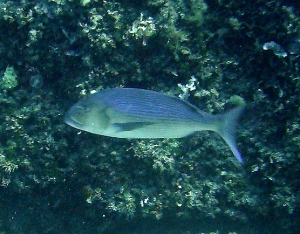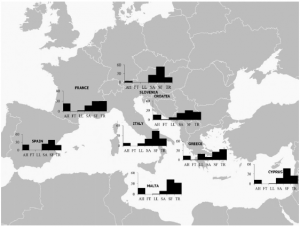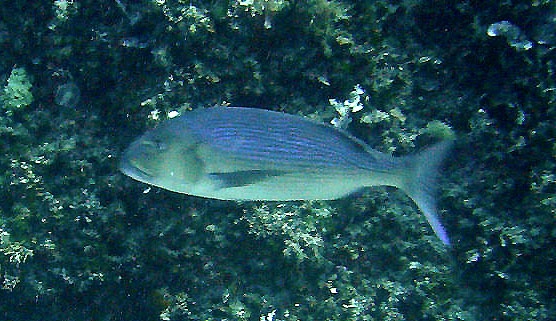ouFish: Capturing recreational fishing trends in in the Mediterranean Sea through social media
By Kaylie Anne Costa, SRC intern
How do you study the impacts of recreational fishing if fisherman are not expected to report what they catch? Scientists studying the impacts of recreational fishing in the Mediterranean Sea are taking a fascinating approach. By compiling over 1500 YouTube videos posted from eight countries, the scientists can analyze what species are being caught and the methods used to catch them. The six fishing methods studied were shore-angling, angling, trolling, longline, fish trapping, and spear fishing.
Shore-angling is fishing from shore without using a boat. Angling is the classic “hook, line, and sinker” technique where fishing is done from a still boat and the hook is baited with lures or baitfish. On the other hand, trolling involves fishing from a moving boat and/or with moving fishing equipment. Longline is similar to trolling as the boat is moving, but longline involves a series of over one hundred hooks hanging from one long main line. Fish trapping uses a portable pot trap left on the seafloor for a specific amount of time and spear fishing is underwater fishing with a spear gun but without dive equipment.
After watching these videos that the public had posted, the scientists noted that there was a total of 7799 fish caught. Shockingly, just 26 fish species made up more than 80 percent of the 7799 fish caught. The top 3 species that were caught most in the videos were common dentex, gilt-head seabream, white seabream, and greater amberjack . This important information highlights species that may be of increased concern when altering regulations or quotas allowed in recreational fishing. It is important to note that this data is not a complete picture of all the recreational catches, but even still, this new technique allows a glimpse into an extremely understudied area that could have drastic impacts on fisheries.

Figure 1: The common dentex, the fish species that was caught the most in the YouTube videos studied [By Yoruno [CC BY-SA 3.0 (https://creativecommons.org/licenses/by-sa/3.0)], from Wikimedia Commons]
Of these six methods, the most popular was spear fishing, which was represented in over 30 percent of the videos. Coming in a close second was trolling at 28 percent of the videos. This information can also help government officials improve regulations as well as guide future studies. Additionally, it is important to consider the additional environmental impacts of the most popular techniques. For example, when spear fishing, it may be difficult to be sure the fish is within the regulation size before shooting a fish. Since this is the most popular technique, future experiments should focus on the size of the fish caught in the recreational industry. Fortunately, fish trapping and long-lining, techniques that can cause larger amounts of bycatch, were only present in a small percentage of the videos.

Figure 2: Map showing the percentage of videos utilizing different fishing techniques by country. Gear codes: angling (AH), fish trapping (FT), longlines (LL), shore-angling (SA), spearfishing(SF), and trolling (TR) [Giovos et al., 2018]
Overall this study introduces a new way to take a glimpse into the recreational fisheries in the Mediterranean Sea and can be used in the future to study recreational fisheries all over the world. Who knows what scientific question your next YouTube video could help solve!
Works cited
Giovos, I., Keramidas, I., Antoniou, C., Deidun, A., Font, T., Kleitou, P., … & Moutopoulos, D. K. (2018). Identifying recreational fisheries in the Mediterranean Sea through social media. Fisheries Management and Ecology, 25(4), 287-295.



